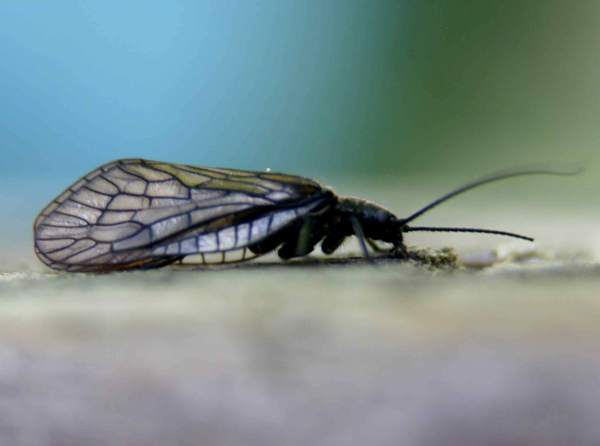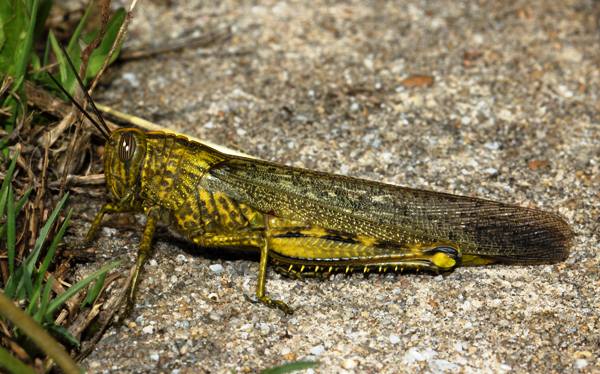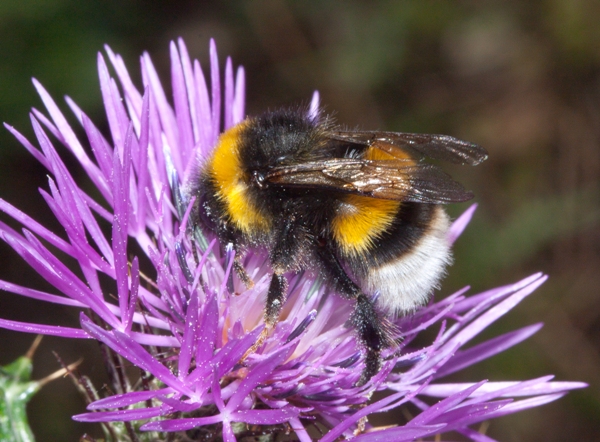Insect Miscellany
Ants, bees and wasps are insects, and so are a host of other creatures, not all of which have wings. Rather than leave the impression that our Insect categories are anywhere near complete, we have created this 'miscellany page' and from time to time we will add pictures and brief details of species from the class Insecta that do not fit in to our main sections.
|
Alder Fly Sialis lutariaAlder larvae live in the silt at the bottom of ponds, ditches and river backwaters, where they feed on bloodworms and other small aquatic creatures. Adult Alder Flies can be seen on the wing in springtime. The females lay their eggs on waterside vegetation, and once hatched the young larvae fall in to the water, where they live for a year or sometimes two years. |
|
Egyptian Grasshopper Anacridium aegyptiumThe Egyptian Grasshopper is a large and very common species in Mediterranean countries. Females are typically 6cm long, while males are rarely more than half that length. Being well camouflaged, they can give you quite a fright when they suddenly take off in front of you as you approach. They are quite harmless, however. |
|
Buff-tailed Bumblebee Bombus terrestrisThis is the largest and one of the most common of the bumblebees found in Britain and Ireland. Only the queens have distinctive buff tails; workers and males have white tails. The workers of this species are active all through the winter months.. |
Excited at the prospect of flyfishing? So are we, and we're pretty sure you would find the Winding River Mystery trilogy of action-packed thrillers gripping reading too. Dead Drift, Dead Cert, and Dead End are Pat O'Reilly's latest river-and-flyfishing based novels, and now they are available in ebook format. Full details on our website here...
Buy each book for just £4.96 on Amazon...
Please Help Us: If you have found this information interesting and useful, please consider helping to keep First Nature online by making a small donation towards the web hosting and internet costs.
Any donations over and above the essential running costs will help support the conservation work of Plantlife, the Rivers Trust and charitable botanic gardens - as do author royalties and publisher proceeds from books by Pat and Sue.






